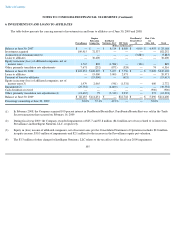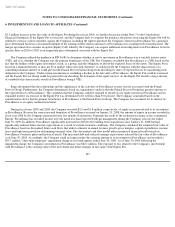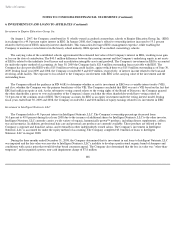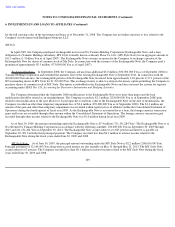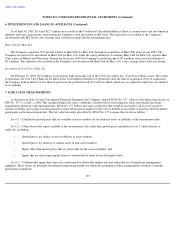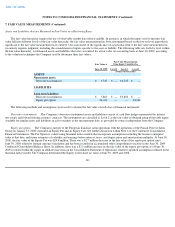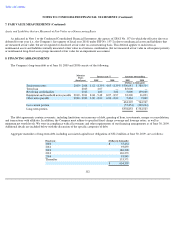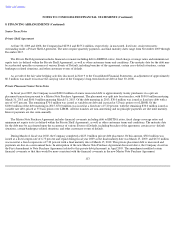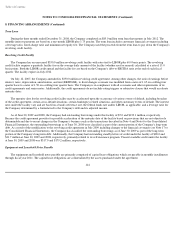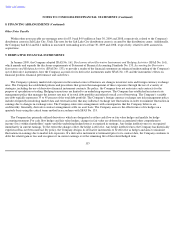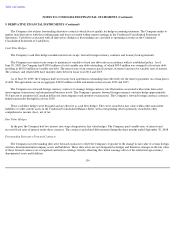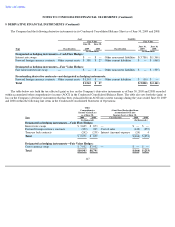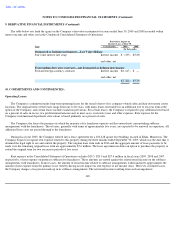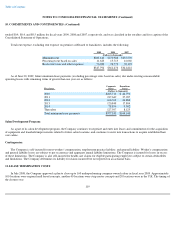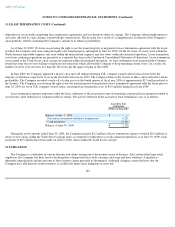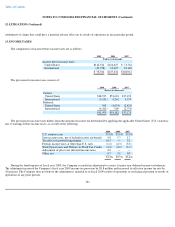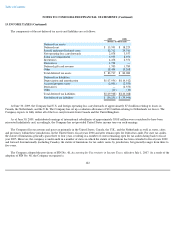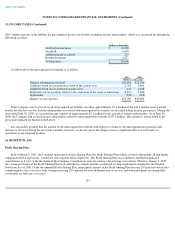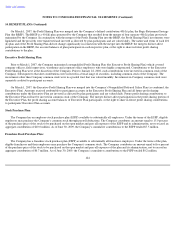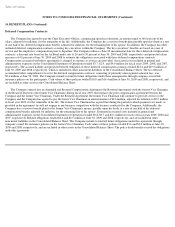Supercuts 2009 Annual Report Download - page 117
Download and view the complete annual report
Please find page 117 of the 2009 Supercuts annual report below. You can navigate through the pages in the report by either clicking on the pages listed below, or by using the keyword search tool below to find specific information within the annual report.
Table of Contents
NOTES TO CONSOLIDATED FINANCIAL STATEMENTS (Continued)
8. FINANCING ARRANGEMENTS (Continued)
Other Notes Payable
Within other notes payable are mortgage notes for $3.0 and $4.9 million at June 30, 2009 and 2008, respectively, related to the Company's
distribution center in Salt Lake City, Utah. The note for the Salt Lake City distribution center is secured by that distribution center. Additionally,
the Company had $2.4 and $4.1 million in unsecured outstanding notes at June 30, 2009 and 2008, respectively, related to debt assumed in
acquisitions.
9. DERIVATIVE FINANCIAL INSTRUMENTS
In January 2009, the Company adopted SFAS No. 161, Disclosures about Derivative Instruments and Hedging Activities (SFAS No. 161),
which amends and expands the disclosure requirements of Statement of Financial Accounting Standards No. 133, Accounting for Derivative
Instruments and Hedging Activities
(SFAS No. 133), to provide a reader of the financial statements an enhanced understanding of the Company's
use of derivative instruments, how the Company accounts for its derivative instruments under SFAS No. 133 and the instruments' effects on
financial position, financial performance and cash flows.
The Company's primary market risk exposures in the normal course of business are changes in interest rates and foreign currency exchange
rates. The Company has established policies and procedures that govern the management of these exposures through the use of a variety of
strategies, including the use of derivative financial instrument contracts. By policy, the Company does not enter into such contracts for the
purpose of speculation or trading. Hedging transactions are limited to an underlying exposure. The Company has established an interest rate
management policy that manages the interest rate mix of its total debt portfolio and related overall cost of borrowing. The Company's variable
rate debt typically represents 35 to 45 percent of the total debt portfolio. The Company's foreign currency exchange rate risk management policy
includes frequently monitoring market data and external factors that may influence exchange rate fluctuations in order to minimize fluctuation in
earnings due to changes in exchange rates. The Company enters into arrangements with counterparties that the Company believes are
creditworthy. Generally, derivative contract arrangements settle on a net basis. The Company assesses the effectiveness of its hedges on a
quarterly basis using the critical terms method in accordance with SFAS No. 133.
The Company has primarily utilized derivatives which are designated as either cash flow or fair value hedges and qualify for hedge
accounting treatment. For cash flow hedges and fair value hedges, changes in fair value are deferred in accumulated other comprehensive
income (loss) within shareholders' equity until the underlying hedged item is recognized in earnings. Any hedge ineffectiveness is recognized
immediately in current earnings. To the extent the changes offset, the hedge is effective. Any hedge ineffectiveness the Company has historically
experienced has not been material. By policy, the Company designs its derivative instruments to be effective as hedges and aims to minimize
fluctuations in earnings due to market risk exposures. If a derivative instrument is terminated prior to its contract date, the Company continues to
defer the related gain or loss and recognizes it in current earnings over the remaining life of the related hedged item.
115


